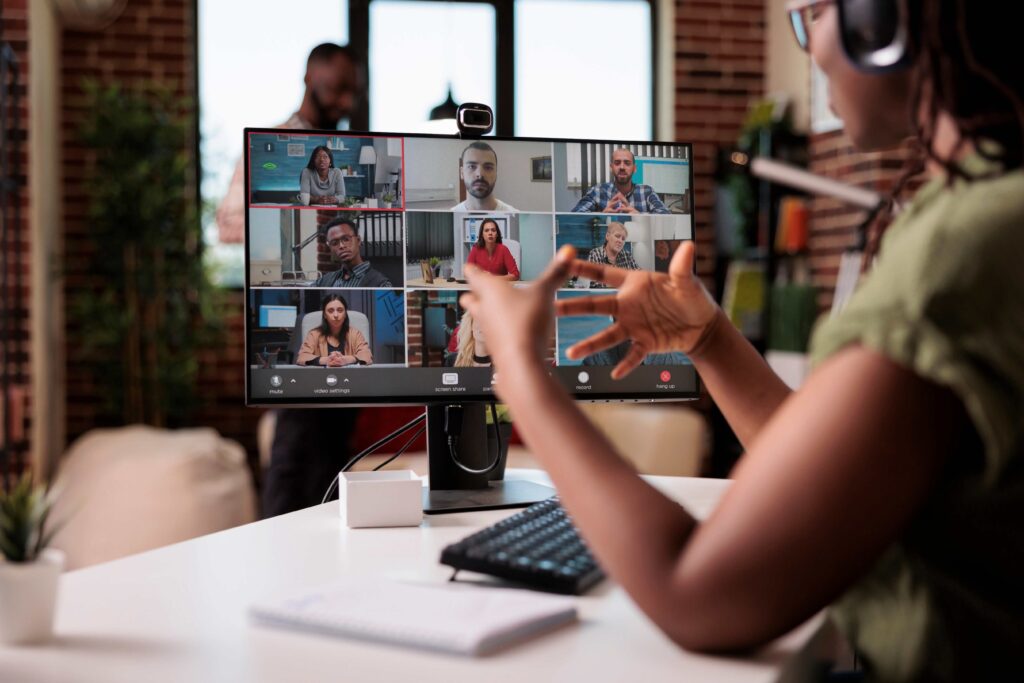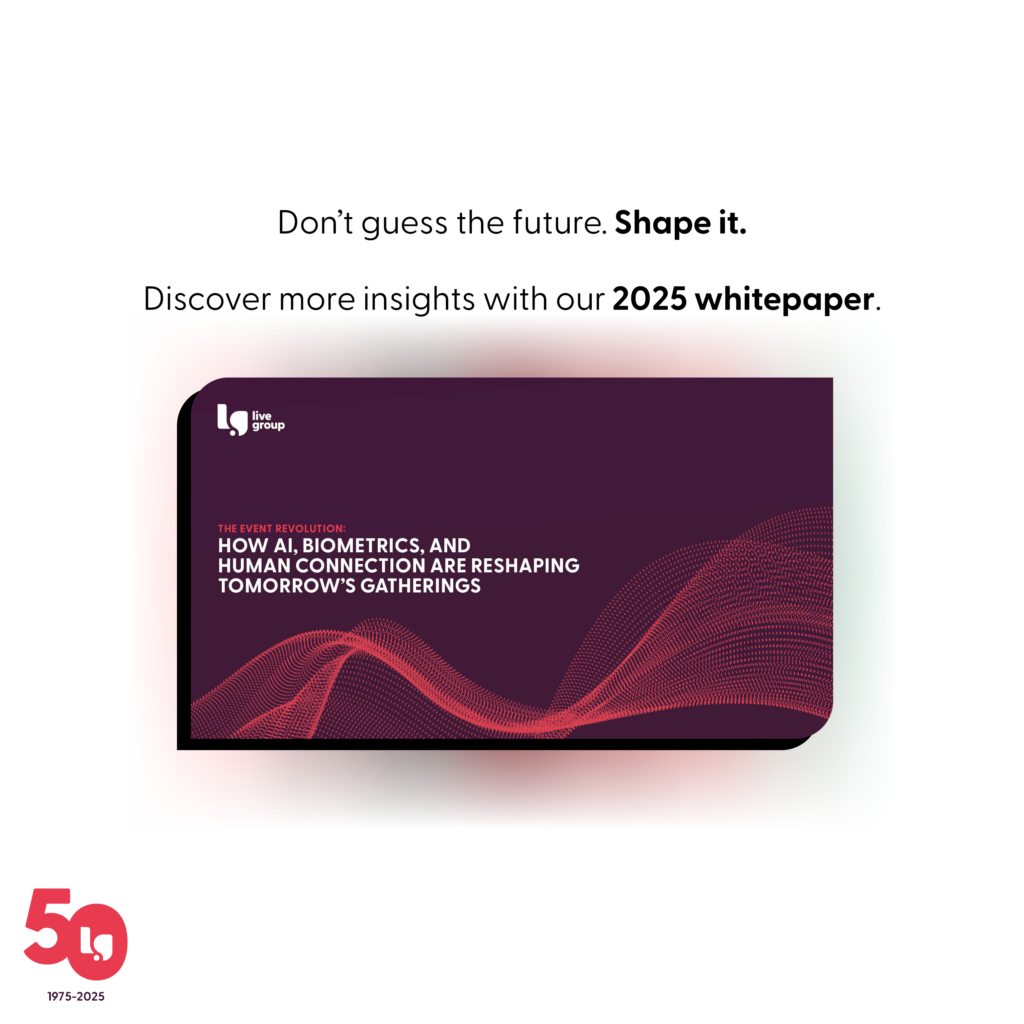In 2025, webinars show no signs of slowing down or losing value.
Forget what you think you know about webinars being just another video call. The numbers tell a different story: 73% of B2B marketers say webinars are their top source of high-quality leads, and companies report that 20% to 40% of webinar attendees become qualified sales opportunities. That’s not luck; it’s the result of a format that uniquely combines engagement, efficiency, and measurable impact.
The Psychology of Commitment: Why Webinar Events Create Stronger Audience Commitment
Here’s what most people miss about webinars: when someone registers and shows up for a 45-minute session, they’re making a significant commitment. Unlike skimming a blog post or clicking through slides, webinar attendance requires clearing calendar time and focusing attention. This self-selection process naturally filters for serious buyers.
The data backs this up. Webinar leads cost around £55 each, compared to £600+ for trade show leads. Yet despite being cheaper, they’re often more valuable. Why? Because that 45-minute commitment signals genuine interest in solving a problem, not just casual browsing. When somebody gives you half their lunch hour, they’re telling you they have budget and urgency.
The Trust Accelerator Effect: How Webinars Build Trust Faster Than Other Channels
Static content can inform, but webinars build trust at an accelerated pace. There’s a fundamental difference between reading about a solution and watching a real expert navigate tough questions in real time. When 92% of attendees say live Q&A is essential to their webinar experience, they’re really saying they want to test your expertise before they buy.
This trust-building happens through multiple channels simultaneously. Attendees hear your voice, see your face, watch you handle unexpected questions, and observe how you interact with other participants. In B2B sales, where trust is everything, this multi-sensory experience compresses what might take months of email exchanges into a single session.
Consider that 68% of marketers can directly attribute revenue to their webinars. That’s not because webinars are magical, but because they create the conditions for trust to develop rapidly. People buy from people they trust, and webinars let you earn that trust at scale.
Webinars as a Content Powerhouse: How to Create Ongoing Value
Here’s where webinars truly excel: they’re not single-use events but compound content machines. One well-executed webinar can fuel your content calendar for months. The maths is compelling: that initial 45-minute investment can be transformed into blog articles, social clips, email sequences, FAQ pages, and sales enablement materials.
A recent industry analysis found that repurposing webinar content saved marketers approximately £500,000 worth of time in 2024 alone. But the real value isn’t just efficiency; it’s consistency. When your blog, social media, and sales materials all draw from the same webinar, your message reinforces itself across channels.
Smart organisations go further. They use polls and Q&A data from webinars to identify exactly what their audience cares about, then create targeted follow-up content addressing those specific concerns. It’s market research and content creation rolled into one.

Scaling Webinar Events: Personalisation Without the Cost
Webinars solve a paradox that plagues most marketing: how to deliver personalised experiences at scale. While 75% of webinars have fewer than 50 live attendees, the platform constraints that limit physical events don’t apply. You can deliver the same high-touch experience to 20 people or 2,000 without changing your approach or multiplying costs.
This scalability extends beyond the live event. Nearly half of all webinar views come from recordings, effectively doubling your reach without additional effort. Compare this to physical events where every additional attendee means more venue space, catering, and materials. With webinars, your thousand-and-first attendee costs the same as your first: nothing.
The Engagement Multiplier: How to Do Webinars That Keep Attention
Interactive elements transform webinars from presentations into conversations. When 44% of hosts include polls and over half the audience typically responds, you’re seeing engagement levels that other digital formats can’t touch. But the real magic happens in how this engagement compounds.
Each interaction creates a micro-commitment. Answer a poll, and you’re invested in seeing the results. Ask a question, and you’re committed to hearing the answer. These small engagements build upon each other, creating an attention flywheel that keeps viewers locked in. It’s why webinar attendees spend an average of 45 to 60 minutes engaged, while the average blog post gets less than 60 seconds.
Tracking ROI: The Revenue Advantage of Webinars
Perhaps the most overlooked benefit of webinars is their measurability. Unlike brand advertising or content marketing, webinars create clear attribution paths. You know exactly who attended, how long they stayed, what questions they asked, and which materials they downloaded.
This granular data transforms follow-up from guesswork into science. Sales teams can prioritise leads based on engagement levels. Marketing can calculate precise ROI. Leadership can see direct lines from webinar investment to revenue. When 75% of marketers report that webinars lowered their overall cost-per-lead, they’re not guessing; they’re measuring.
How to Create a Webinar That Actually Works
The organisations winning with webinars understand they’re not just hosting online presentations. They’re creating interactive experiences that qualify leads, build trust, generate content, and drive measurable revenue. They invest in quality over quantity, focusing on topics their audience genuinely cares about rather than churning out generic sessions.
If you’re considering webinars, start with this question: What expensive problem does your audience need to solve? Build your webinar around that problem, make it interactive, and plan your content repurposing strategy before you go live. The data shows that when you get these elements right, webinars don’t just work; they outperform almost every other marketing channel available.
The real question isn’t whether webinars are effective. It’s whether you’re ready to use them strategically. Because in a world where attention is the scarcest commodity, webinars remain one of the few formats that can command it, convert it, and measure it all at once.
Ready to take the stress out of event planning?
Chat to us today about how our delegate management services can help bring your next event to life – on time, on budget, and beyond expectations. Whether you need full-scale delivery or targeted support, Live Group is here to help.
Download our latest report to explore the latest event solutions, learn how event production agencies are leveraging technology for seamless conference planning, and uncover strategies to enhance hybrid event management.






